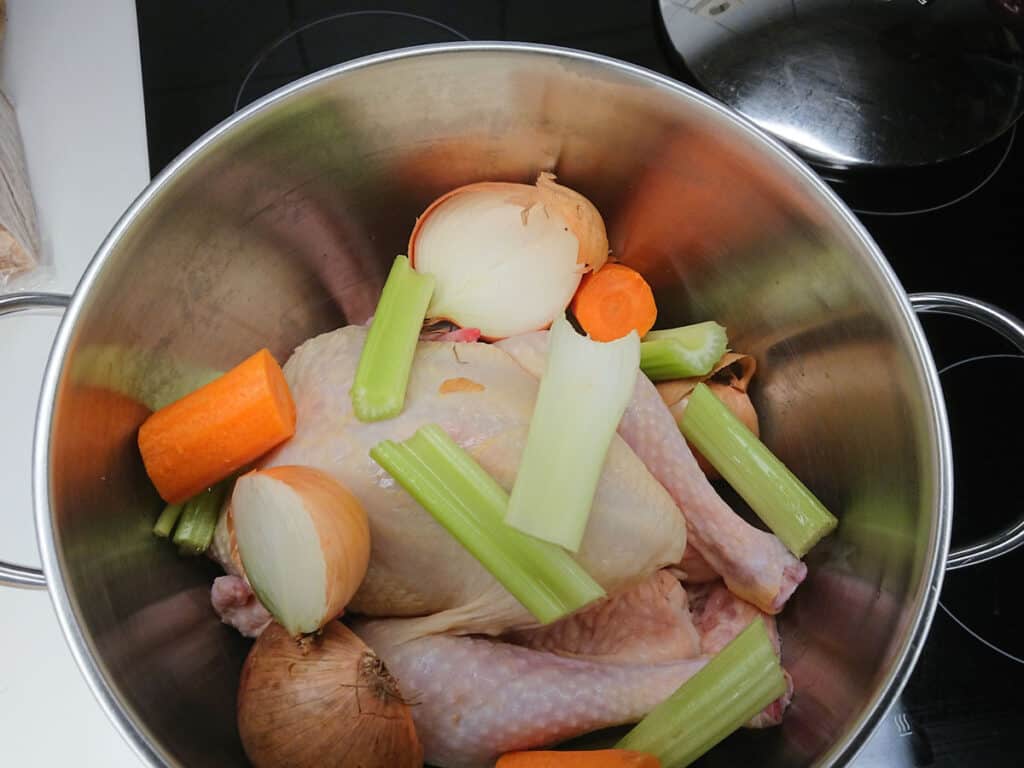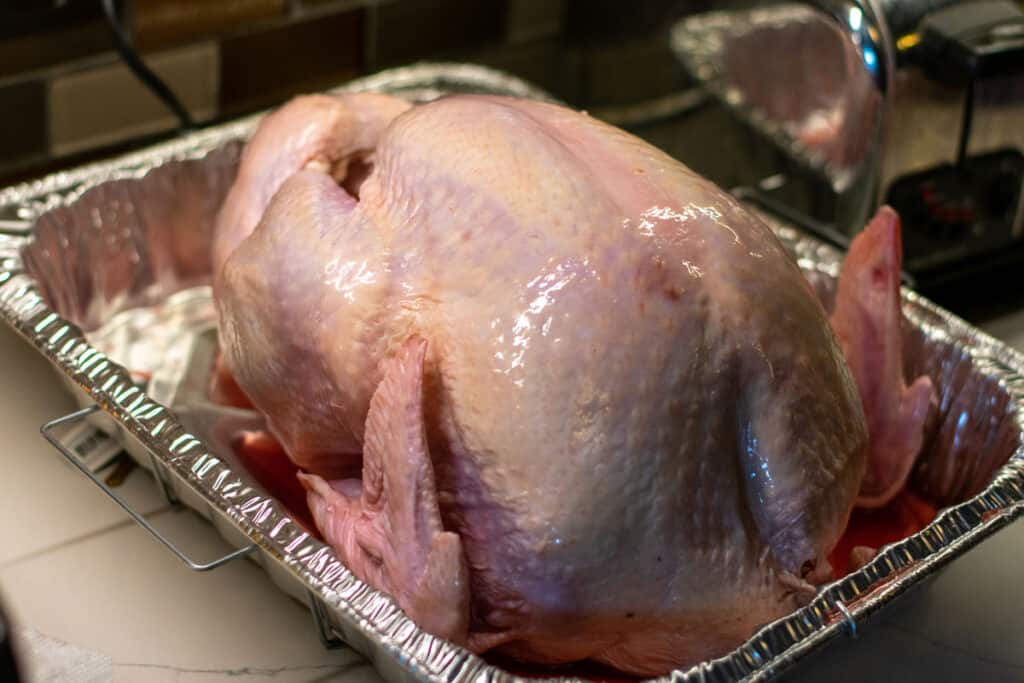When it comes to turkey, the words “drying out” aren’t automatically appealing. But we’re not talking about overcooking the meat to the point of dryness—we’re talking about drying out the skin of the bird before putting it on the smoker.
Is drying out turkey in the fridge a good idea, or should you keep it covered the whole time? This guide will take you through the reasoning behind this technique.
Drying Out Turkey in Fridge
Drying out a turkey will help the skin to crisp up during the cooking process. Leave the bird in the fridge, uncovered, for at least 3 hours or overnight. In theory, you can let it dry as long as you want—assuming you cook it off before the meat begins to spoil.
Why Do It?
If you’ve ever cooked a turkey before—whether in the oven or on the smoker—you probably know that you should pat the skin dry with paper towels before you season it. Most recipes call for this, even if you don’t understand the reasoning behind it.

The truth is that drying the turkey will promote crisper skin, which is one of the best qualities that the finished product has to offer. It’s especially good when you smoke the turkey, as the skin will have superb flavor in addition to an appealing texture.
Some chefs like to take the drying step a bit further by drying out turkey in fridge overnight—or even for a few days. In fact, many proponents of this method say that it yields the best results they’ve ever had.
Pro Tip: If you’re deep-frying the turkey, it’s a good idea to take this step because excess moisture will cause the hot oil to splash up. This can result in serious injury.
How To Dry Turkey in the Fridge
There’s no magic to this step. After drying the bird with paper towels, set it on a platter or roasting pan—anything with rimmed edges, as long as it will hold the entire turkey—and place it in the fridge. The exposure to the cold air will do the rest.
You might also opt to season the bird before putting it in the fridge to dry. For more information, see the separate section below.
Drying Out Turkey in Fridge After Brining
Although you can take this step anytime you cook a turkey, it works particularly well when you’ve brined the turkey for 8 to 24 hours in advance.
Soaking the turkey in a saltwater solution will break down the muscle fibers, tenderizing the meat. It also allows the protein strands to retain moisture better, so brined turkey tends to be moist as well as delicious.
The problem with brining is that the bird is saturated when you take it out of the solution. That can lead to soggy skin if you’re not careful.
You can alleviate the problem somewhat by drying the turkey thoroughly—both inside and out—before seasoning and cooking it. However, allowing it to dry uncovered in the fridge should yield even more impressive results.
How To Brine a Turkey
To make a brine, use a formula of 1 cup of kosher salt for every gallon of liquid. Most of the liquid should consist of water, but feel free to substitute apple juice or cider for some of it.
If you substitute regular table salt for kosher salt, use half the amount. Table salt is made up of smaller crystals than kosher salt, giving it a greater concentration. If you use 1 cup of table salt per gallon of water, the brine will be way too salty.
You’ll need a container that’s big enough to hold the brine mixture, plus the turkey. Moreover, the refrigerator needs to be able to accommodate this container. This can be tricky, especially if your turkey weighs over 20 pounds.

Experiment with different flavors for the brine, depending on how you plan to serve the turkey. Citrus fruits, herbs and spices, and aromatic vegetables like onions, carrots, and celery can all be used to enrich the saltwater solution.
Brown sugar is another popular addition to brine, but try not to use too much. When there’s a great deal of sugar in the brine, the turkey might burn on the outside before it cooks to a safe temperature.
For best results, boil the brine mixture to dissolve the salt. You’ll need to wait until the mixture has cooled completely before adding the turkey. Place it in the fridge, uncovered, until it cools to below 40 degrees.
It’s okay to add a few ice cubes to speed the process along, as long as you don’t dilute the brine too much. Whatever you do, don’t add the turkey to the brine when the liquid is still too warm, or you’ll be inviting hazardous bacteria to set up camp.
When the brine is cool enough, carefully submerge the turkey, then return the container to the fridge. Never brine meat at room temperature—it needs to be stored at temps below 40 degrees to prevent the spread of bacteria.
Leave the turkey in the brine for 8 to 18 hours. You can probably get away with a 24-hour brining period if that fits in better with your plans, but don’t wait too long. Excess exposure to brine will give the cooked turkey a spongy quality.
When you’ve removed the turkey from the brine, dry it thoroughly with paper towels, then set it on a large platter or roasting pan. Place the pan on the lowest shelf of the fridge until you’re ready to start cooking.
How Long Should I Dry Turkey in the Fridge?
The general consensus is to leave the turkey uncovered in the fridge overnight. However, you should be able to leave it that way for up to 48 hours, depending on how long it was in the fridge before you unwrapped it.
Thawed turkey will only keep in the fridge for 1 to 2 days after it’s completely defrosted. That’s why it’s not recommended to draw out the preparation—including this drying step—any longer than necessary.
On the other end of the spectrum, it’s better to dry the turkey for a few hours than to skip the step entirely. Go ahead and dry the turkey in the fridge even if you only have 2 or 3 hours to spare.
About Spatchcocking
Another way to maximize the amount of crispy skin you’ll get is to spatchcock the turkey before adding it to the brine. You can also take this step after brining—it just saves time to do it in advance.
A spatchcocked (or butterflied) turkey has had the backbone removed to make it easier for the bird to lie flat. This increases the amount of skin that’s exposed to the heat and allows the meat to cook through evenly—not to mention more quickly.
To spatchcock a turkey, cut along either side of the backbone with kitchen shears so it can be easily removed. Once you’ve taken it out, flip the bird so that the breast side is facing up, then press down on the breastbone until you hear the wishbone crack.
At this point, the turkey should lie relatively flat on the work station. You can add it to a brine, put it in the fridge to dry, or season and cook it right away.
Can You Season a Turkey Before Drying It in the Fridge?
As long as you pat the turkey dry beforehand, you can add the seasoning rub before you put it back in the fridge to continue drying. If necessary, use a binder like olive oil or unsalted butter to help the spices adhere.
Seasoning the meat beforehand will save time when you’re ready to start cooking. That’s the main reason to take the step in advance. Otherwise, it shouldn’t make much difference in terms of quality.
Can You Leave a Turkey on the Counter to Dry?
It’s never a good idea to leave meat at room temperature for longer than two hours—or one hour in hot weather. Doing so will greatly increase the risk of food poisoning.

When you’re almost ready to fire up the smoker, it’s fine to take the turkey out of the fridge to remove the chill from the skin. Just make sure to start cooking it after about an hour.
Final Thoughts
Should you dry your turkey in the fridge overnight? Sure, if you want the skin to be crackling-crisp when the bird is done—and especially if you’re using the deep-fryer.
There’s no real harm in skipping this step, but it will give the turkey plenty of eye appeal—and most importantly, a mouthwatering texture.
Happy grilling!

